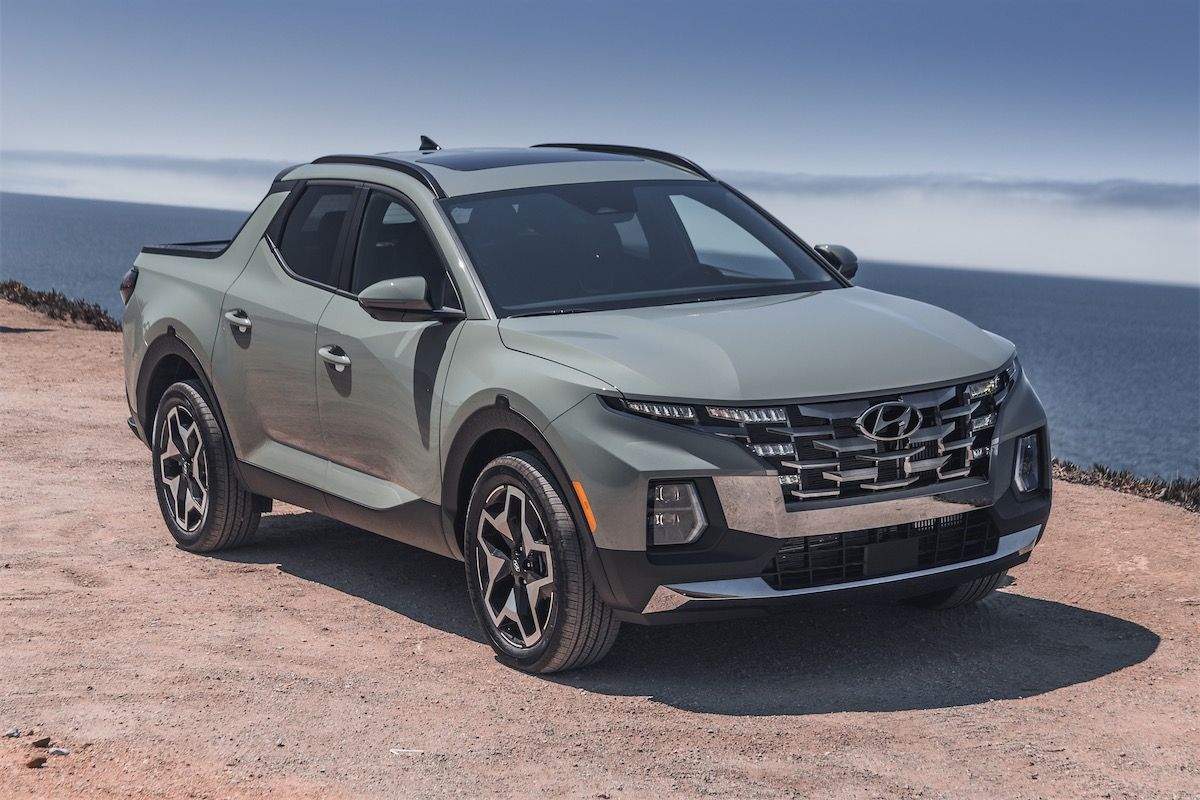
As one of the few fledgling members of a new compact truck segment, the 2022 Hyundai Santa Cruz offers the size and maneuverability of a crossover with the practicality of a pickup. If the current crop of midsize trucks are too large and the Honda Ridgeline is too pricey, the Santa Cruz seems like a stellar option. Perhaps that's why it's racking up so many awards.
We recently spent a week driving the top Santa Cruz Limited trim level and adored our time with the little truck. However, there is one feature on the upper trim levels that we simply cannot stand. If Hyundai fixes this one issue, the Santa Cruz could be just about perfect. Here are all of the things we love about the Santa Cruz, one feature we wish Hyundai would add, and one it should absolutely change right away.
Love: Cool Styling
With the exception of the Hyundai Tucson, which shares the same front end styling, nothing else looks like the Santa Cruz on the road; not even the similarly-sized Ford Maverick, which has more conventional pickup truck styling. We love how Hyundai went bold with the design, giving the Santa Cruz funky headlights, brawny wheels with plastic-clad wheel arches, copious creases, and unique body lines. Though our white tester looked a bit subdued, Hyundai offers bolder hues like Blue Stone, Mojave Sand, and Sage Gray (which is more greenish).
Love: Gutsy Engine
Under the hood, the SE and SEL trim levels use a 2.5-liter four-cylinder engine producing 191 horsepower. While this engine is perfectly adequate, we love the optional 2.5-liter turbocharged engine found in the SEL Premium and Limited trims. This gutsy powerhouse produces 281 hp and a whopping 311 lb-ft of torque. Power goes out through an eight-speed dual-clutch automatic (an interesting choice for a pickup) boasting quick shifts and a capable 5,000-pound towing capacity. Not only is the Santa Cruz more potent than the Maverick, but it can tow more as well.
While we love the engine that comes in the SEL Premium and Limited, upgrading to these trims also bundles in the one feature we hate in the Santa Cruz (see below). Hyundai should also think about adding a hybrid or possibly an electric drivetrain option. The hybrid system is our favorite feature in the Ford Maverick and gives it a slight edge over the Santa Cruz as a result.
Love: Upmarket Interior
Ford did a great job with the Maverick's interior, but we'd argue the Santa Cruz is the more pleasing truck to spend a lot of time in. The cabin looks nearly identical to the Tucson SUV except for some subtle orange accents that are Santa Cruz specific. Opting for the top Limited trim level bundles a slew of premium luxury features, including heated/ventilated front seats, a heated steering wheel, and a surround-view monitor. Though we love these features, especially the ventilated seats, we might consider stepping down to a lower trim level just to avoid our most hated feature.
Love: Flexible Storage
All Santa Cruz trims come in one configuration, a four-door with a four-foot bed. It's far from the most practical truck on the market, but Hyundai includes several niceties as standard, including a bed liner and a built-in trunk. An available Activity Package for $3,270 (standard on upper trims) adds a sliding tonneau cover, roof rails, utility tracks, bed lighting, a sunroof, digital gauge cluster, and wireless charging. Smaller items that might roll around in the bed can go into the back seat, which has storage under the cushions.
Hate: Touch Controls
Ok, it's time to reveal our only hated feature in the Santa Cruz. It's the same as our only hated feature in the Tucson: the touch controls. Stepping up to the SEL Premium trim replaces the easy-to-use climate control buttons and knobs with a touch-capacitive setup, finished in a gloss black trim that will attract every fingerprint and spec of dust. The SEL Premium at least keeps a physical volume and tuning knob, which disappear on the Limited trim in favor of far less intuitive touch sliders. Truck owners love physical controls, and the switch to a mostly-touch interface on the top trim level seems baffling.
On a less annoying note, the smaller eight-inch touchscreen gets wireless CarPlay and Android Auto, while the larger 10.25-inch display does not. Until Hyundai addresses these issues, we'd save some cash and avoid the Limited trim.
